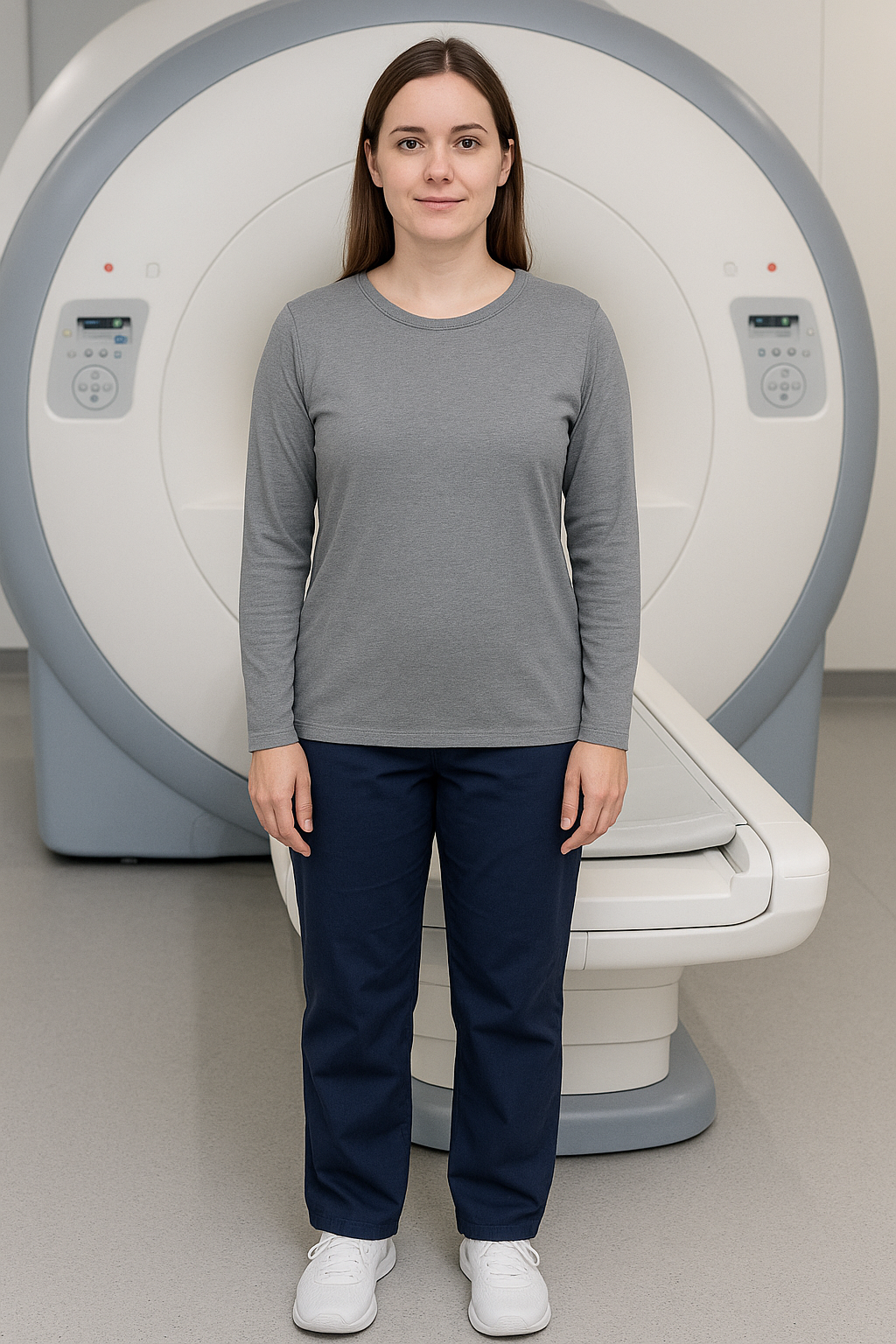How to prepare for an MRI Scan
Review from Huettel (3rd Edition); Functional Magnetic Resonance Imaging, Chapter 2, Section “MRI Safety” pp 44-55
Preparing a patient for an MRI scan involves several steps to ensure the procedure goes smoothly and safely:
Patient Education: Explain the MRI procedure to the patient, including its purpose, what to expect during the scan, and any potential risks or discomforts. Address any concerns or questions they may have
Screening for Contraindications: Ensure the patient doesn't have any contraindications for an MRI, such as having certain metal implants, pacemakers, or claustrophobia. Review the patient's medical history and any previous imaging studies to determine suitability
Metal Screening: Since MRI uses a strong magnetic field, it's crucial to screen for any metal objects or implants that the patient may have. This includes jewelry, piercings, hearing aids, dental work, implants, and even certain medical devices like pacemakers or infusion pumps. All metal objects must be removed or declared safe for the MRI environment
Clothing: Instruct the patient to wear loose, comfortable clothing without any metal components. If necessary, provide hospital gowns or clothing without metal snaps or zippers (see paragraph below)
Pregnancy: Determine if the patient is pregnant or breastfeeding, as MRI scans may pose risks to the developing fetus. No measurements during pregnancy
Anxiety and Claustrophobia: Address any concerns the patient may have about claustrophobia or anxiety during the scan. Provide reassurance and, if necessary, offer strategies such as relaxation techniques or sedation options
Preparation Instructions: Provide the patient with clear instructions on what to do before the scan, including arrival time, any paperwork to complete, and where to check-in at the facility
Appropriate attire to wear during an MRI scan

Recommended
100% cotton clothing (same applies for underwear)
100% cotton bra or remove it
Loose fitting cotton or linen clothing (jeans are OK)
Standard zippers and rivets are usually ok [2,3,4,5]
NOT Recommended
Any compression wear
Sportswear
Jogging pants
Yoga pants
Tight fitting spandex clothing
Clothing with unusual metal embellishments
Skirts and shorts
Prohibited clothing
Fabrics with anti-microbial ("Anti-bacterial", "Odor-fighting", "Therapeutic" or" Heat retaining") or antiperspirant properties (up to 2nd-degree burns)
T-Shirt (or blouse) containing silver microfibres
Brassiere containing microfibres
Prohibited clothing brands
Athleta
Columbia Omniheat
Duluth Trading Co.
Juzo USA
Lululemon
Tommy Copper
MRI Terminology[6]
| Conditional 1 | The object is considered to be “weakly” ferromagnetic, only |
| Conditional 2 | These particular “weakly” ferromagnetic coils, filters, stents, clips, cardiac occluders, or other implants typically become firmly incorporated into the tissue 6 weeks following placement. Therefore, it is unlikely that these objects will be moved or displaced by interactions with the magnetic fields of MR systems operating at the static magnetic field strength used for testing |
| Conditional 3 | Certain transdermal patches with metallic foil (e.g., Deponit, nitroglycerin transdermal delivery system) or other metallic components, although not attracted to an MR system, have been reported to heat excessively during MR procedures. This excessive heating may produce discomfort or burn a patient or individual wearing a transdermal patch with a metallic component. |
| Conditional 4 | Halo vest or cervical fixation device may have ferromagnetic component parts, however, the magnetic field interactions have not been determined. Nevertheless, there has been no report of patient injury in association with the presence of this device in the MR environment at the static magnetic field strength used for MR safety testing |
| Conditional 5 | Object is acceptable for a patient undergoing an MR procedure or an individual in the MR environment only if specific guidelines or recommendations are followed (see specific information for a given object on this website and contact the manufacturer for further information). Please refer to the specific criteria for performing the MR procedure by reviewing the information for the object on this website in the Safety Information section or on the manufacturer's website. |
| Conditional 6 | Static magnetic field of 3T or less -Maximum spatial gradient magnetic field of 720-Gauss/cm (a higher value for the spatial gradient magnetic field may apply if properly calculated). -Maximum MR system reported whole-body-averaged specific absorption rate (SAR) of 2-W/kg for 15 minutes of scanning (per pulse sequence). In non-clinical testing, the implant/device produced a temperature rise of less than or equal to 6° C using an MR system reported, whole body averaged specific absorption rate (SAR) of 2-W/kg for 15-minutes (per pulse sequence) of scanning in a 3-Tesla MR system. Contact the manufacturer of this implant/device for further information, as needed |
| Conditional 7 | This device is not intended for use during the operation of an MR system for an MR procedure. That is, this device should not be inside of the bore of the MR system, exposing this device to the time-varying and RF fields activated during an MR procedure. Contact the manufacturer of this implant/device for further information |
| Conditional 8 | Static magnetic field of 1.5T and 3T, only Non-clinical testing demonstrated that the implant/device is MR Conditional A patient with this implant/device can be scanned safely immediately after placement under the following conditions: -Maximum spatial gradient magnetic field of 720-Gauss/cm (a higher value for the spatial gradient magnetic field may apply if properly calculated) -Maximum MR system reported whole-body-averaged specific absorption rate (SAR) of 2-W/kg for 15 minutes of scanning (per pulse sequence) Highest temperature changes: <= 6°C at 3T |
Standard hygienic precautions
Handwashing is highly recommended
Gloves are recommended but not mandatory
If you prefer to use masks, please ensure they do not contain any ferromagnetic parts
After each scan, it is recommended that disinfectants/sanitizers (for head coil and paddings) are used
References
[1] http://www.mrisafety.com/SafetyInformation_view.php?editid1=166
[2] 2http://www.bmap.ucla.edu/docs/MRIClothingGuidelines.pdf
[3] https://www.ncbi.nlm.nih.gov/pmc/articles/PMC7964672/
[4] https://www.ismrm.org/safety/2021/MRI-Safety-clothing-poster-2021.pdf
[5] https://www.sciencedirect.com/science/article/abs/pii/S0363018822001128
[6] https://www.mrisafety.com/Terminology.html